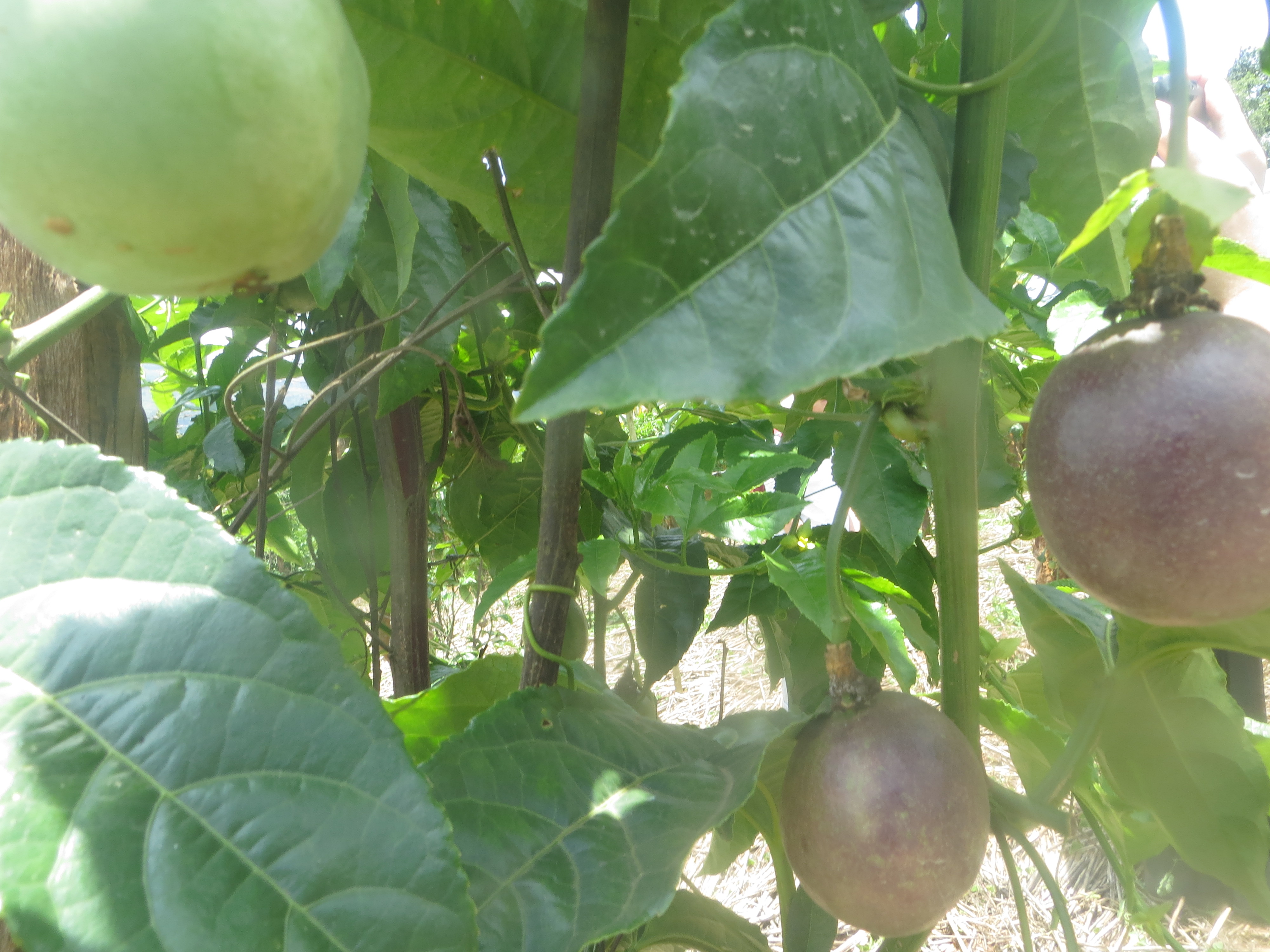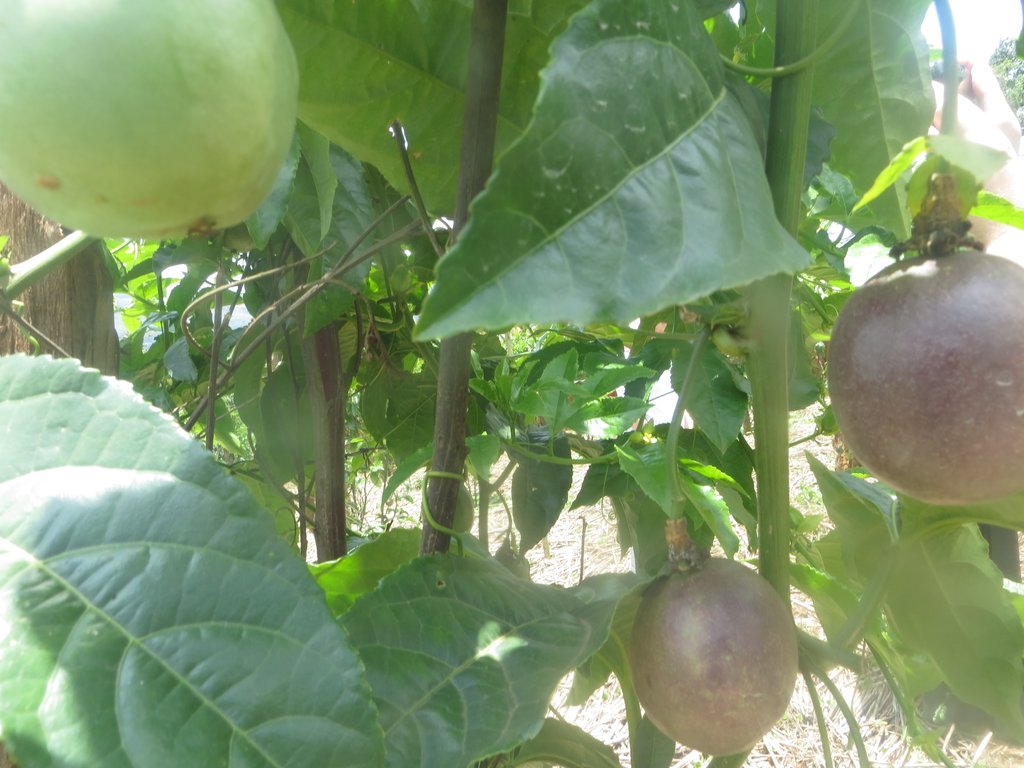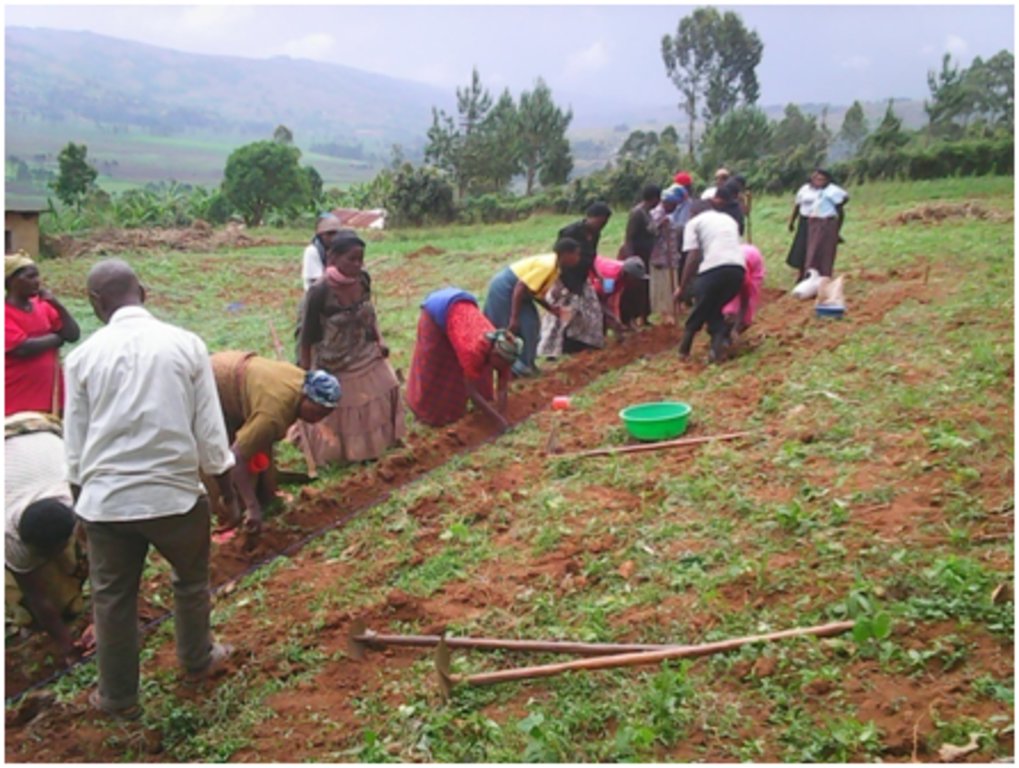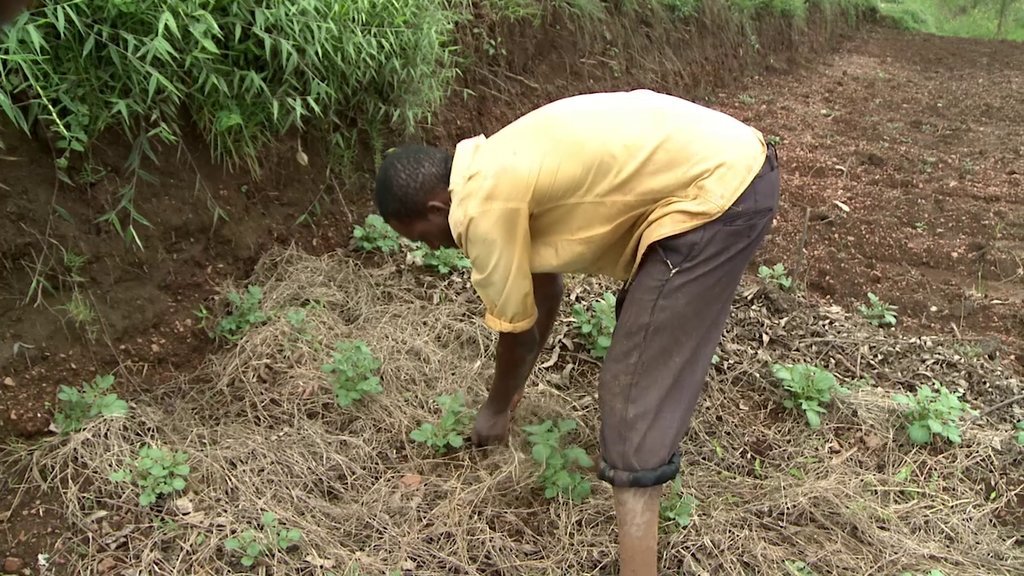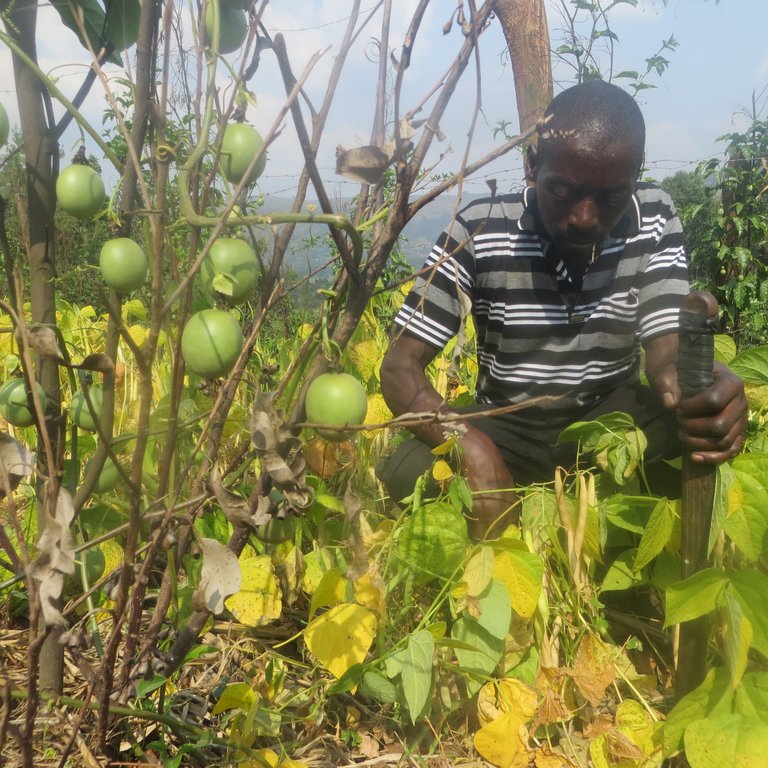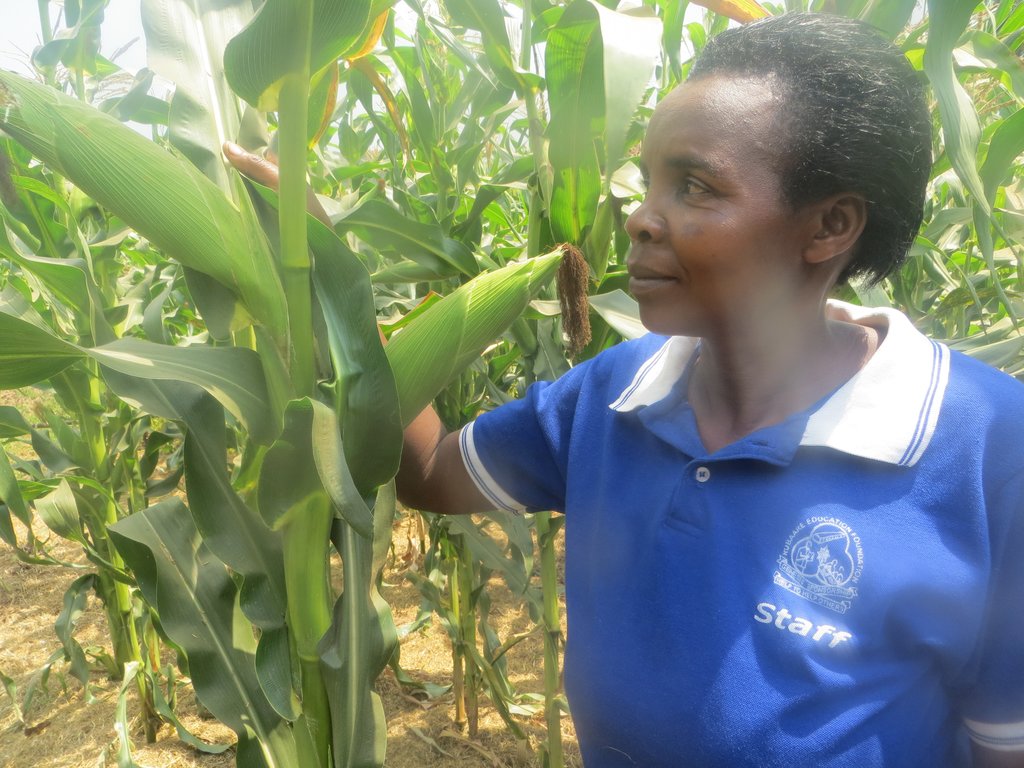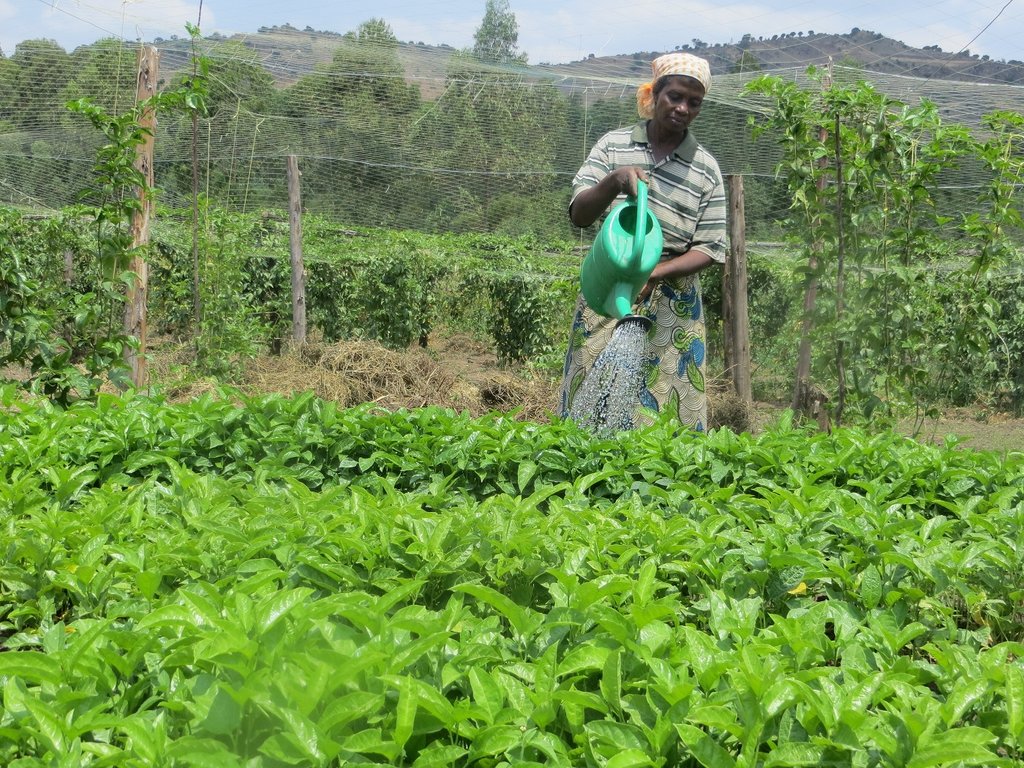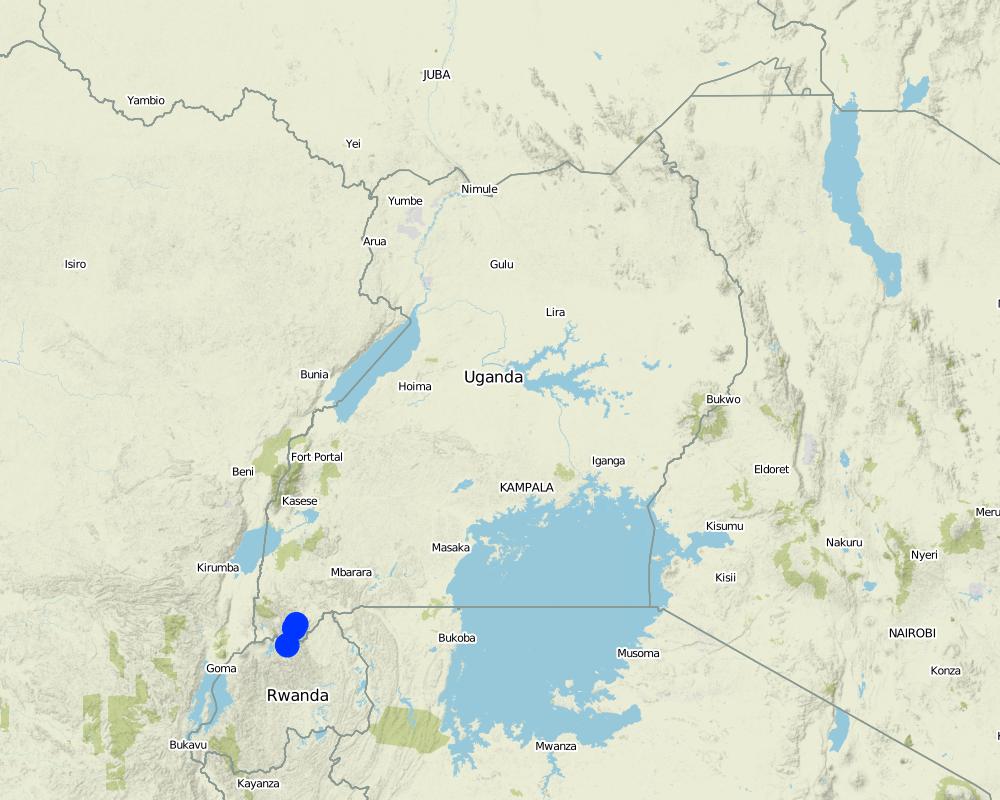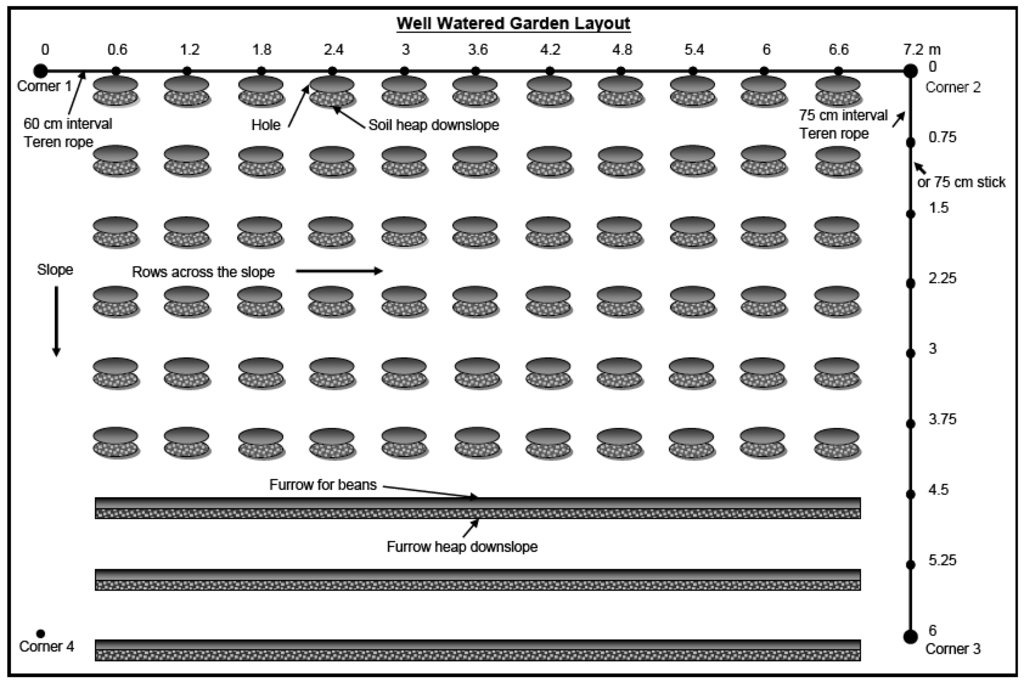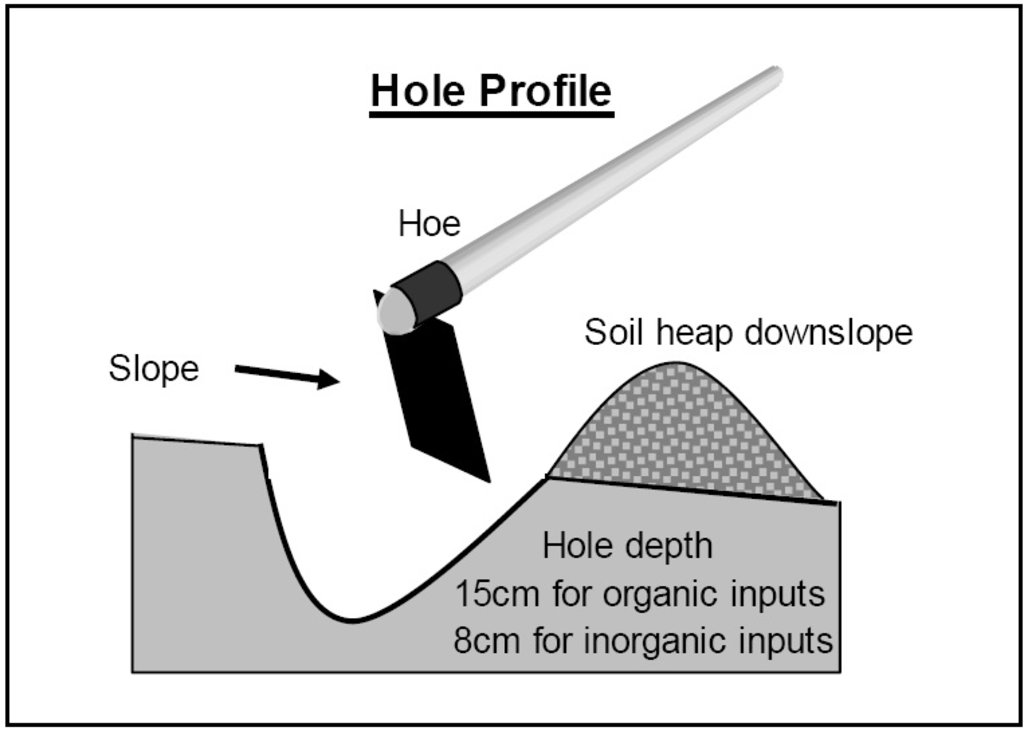Farming God's Way [乌干达]
- 创建:
- 更新:
- 编制者: Philip Tibenderana
- 编辑者: Mirjam Nufer
- 审查者: Alexandra Gavilano, Nicole Harari, Hanspeter Liniger
Empinga ya Ruhanga
technologies_719 - 乌干达
查看章节
全部展开 全部收起1. 一般信息
1.2 参与该技术评估和文件编制的资源人员和机构的联系方式
关键资源人
SLM专业人员:
有助于对技术进行记录/评估的项目名称(如相关)
Book project: where people and their land are safer - A Compendium of Good Practices in Disaster Risk Reduction (DRR) (where people and their land are safer)有助于对技术进行记录/评估的机构名称(如相关)
Tear Fund Switzerland (Tear Fund Switzerland) - 瑞士1.3 关于使用通过WOCAT记录的数据的条件
(现场)数据是什么时候汇编的?:
07/09/2016
编制者和关键资源人员接受有关使用通过WOCAT记录数据的条件。:
是
1.4 所述技术的可持续性声明
这里所描述的技术在土地退化方面是否存在问题,导致无法被认为是一种可持续的土地管理技术?:
否
注释:
So far, where this technology has been applied, soil erosion has been reduced and crop yields have increased
1.5 请参阅有关SLM方法的问卷
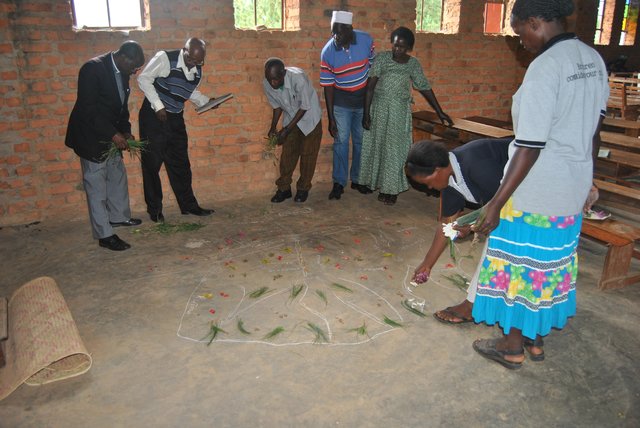
Catchment Based Integrated Water Resources Management [乌干达]
Catchment based integrated water resources management is a process which promotes the coordinated development and management of water, land and related resources in order to maximise economic and social welfare in an equitable manner without compromising the sustainability of vital eco systems
- 编制者: Philip Tibenderana
2. SLM技术的说明
2.1 技术简介
技术定义:
Farming Gods Way is a method of farming which aims to preserve soil structure through minimum tillage, mulching with grass or plant stalks and use of organic manure for improved crop yields.
2.2 技术的详细说明
说明:
The technology is applied in already existing farmlands, which are individually owned and land users are practicing conventional/traditional farming methods. An average farm size is less than half an acre.
It is built on the fact that when God created the first garden, it was a highly productive rainforest which was in need of nothing. The forest was capable of succeeding even in drought years and never slowed or lost its productivity. The trees never lost their leaves or wilt. They keep on producing flowers, fruits and seeds and are able to carry vast numbers and diversity of animal species. God put mechanisms in place which would allow the fauna, flora and soil to co-exist, with high levels of productivity, no environmental degradation, little or no erosion and a high buffering ability to withstand all the negative parameters of the harsh climate. Therefore, this technology helps to maintain soil structure and texture increasing its ability for water retention and soil fertility, thus increasing crop yields.
The major activities needed to establish the technology include; awareness creation and training land users on the technology, setting up demonstration gardens, identification of contact farmers, supporting them to establish demonstration gardens in the community and follow up support to the implementing farmers.
What the land users dislike about this technology is that it involves a lot of measurements and record keeping, which they are not used to, the mulching material is not readily available and the mulch harbors rodents.
2.3 技术照片
2.5 已应用该技术的、本评估所涵盖的国家/地区/地点
国家:
乌干达
区域/州/省:
South Western Region
有关地点的进一步说明:
Rubaya, Rwamucucu and Kyanamira Sub Counties, Kabale District
Map
×2.6 实施日期
注明实施年份:
2015
2.7 技术介绍
详细说明该技术是如何引入的:
- 通过项目/外部干预
注释(项目类型等):
The technology was introduced under the Integrated Water Resources Management Project to support farmers to mazimise land productivity
3. SLM技术的分类
3.1 该技术的主要目的
- 改良生产
- 减少、预防、恢复土地退化
- 保护生态系统
- 降低灾害风险
- 适应气候变化/极端天气及其影响
- 创造有益的经济影响
- 创造有益的社会影响
3.2 应用该技术的当前土地利用类型

农田
- 一年一作
- 多年一作(非木材)
主要农作物(经济作物及粮食作物):
Potatoes, beans, maize, sorghum, cabbages, tobacco, peas, wheat, barley

混合(作物/放牧/树木),包括农林
- 农林业
主要产品/服务:
Trees, poles, fodder, firewood
3.3 有关土地利用的更多信息
该技术所应用土地的供水:
- 雨养
每年的生长季节数:
- 2
具体说明:
September to January and March to June
3.4 该技术所属的SLM组
- 轮作制度(轮作、休耕、轮垦)
- 最小的土壤扰动
- 土壤肥力综合管理
3.5 技术传播
具体说明该技术的分布:
- 均匀地分布在一个区域
注释:
This technology has been demonstrated in specific villages so that land users can learn and implement it on their individual plots of land
3.6 包含该技术的可持续土地管理措施

农艺措施
- A2:有机质/土壤肥力
- A3:土壤表面处理

管理措施
- M4:活动时间安排的重大变化
3.7 该技术强调的主要土地退化类型

化学性土壤退化
- Cn:肥力下降和有机质含量下降(非侵蚀所致)

物理性土壤退化
- Pc:压实

生物性退化
- Bc:植被覆盖的减少
- Bf:火灾的有害影响
- Bl:土壤寿命损失
3.8 防止、减少或恢复土地退化
具体数量名该技术与土地退化有关的目标:
- 减少土地退化
4. 技术规范、实施活动、投入和成本
4.1 该技术的技术图纸
4.2 技术规范/技术图纸说明
This drawing shows the layout of a well-watered garden. After the land is shaved (removal of top vegetative cover), it is measured out following specifications using a teren rope (a non-stretch, hardy, measuring rope used to ensure that crops are planted in straight lines). The planting stations are dug (holes and furrows) and required inputs like ash and fertiliser are added and finally seeds planted. Hole and furrow depths vary with the type of crop to plant but are usually 150mm deep. The spaces between the rows is covered with mulch.
4.3 有关投入和成本计算的一般信息
具体说明成本和投入是如何计算的:
- 每个技术区域
注明尺寸和面积单位:
Acre
具体说明成本计算所用货币:
- 美元
注明美元与当地货币的汇率(如相关):1美元=:
3300.0
注明雇用劳工的每日平均工资成本:
USD 2.12
4.4 技术建立活动
| 活动 | 措施类型 | 时间 | |
|---|---|---|---|
| 1. | Making of compost manure | 农业学的 | After harvest of crops |
| 2. | Clearing the land (removing above ground vegetation) | 管理 | Before onset of rains |
| 3. | Shaving the land (skinning of vegetative cover) | 农业学的 | Before the onset of rains |
| 4. | Seed selection | 农业学的 | Before the onset of rains |
| 5. | Gathering mulch material | 管理 | Before the onset of rains |
| 6. | Setting out (measuring, making planting stations, adding ash and manure) | 农业学的 | Before the onset of rains |
| 7. | Application of mulch | 农业学的 | Before the onset of rains |
| 8. | Planting | 管理 | Onset of rains |
| 9. | Thinning, staking, gap filling, top dressings | 农业学的 | 3 weeks after planting |
| 10. | Spraying herbicides | 农业学的 | Weekly |
| 11. | Harvesting and storing | 管理 | From 90 days onwards |
4.5 技术建立所需要的费用和投入
| 对投入进行具体说明 | 单位 | 数量 | 单位成本 | 每项投入的总成本 | 土地使用者承担的成本% | |
|---|---|---|---|---|---|---|
| 劳动力 | Making compost, clearing, shaving, seed selection, gathering mulch | person days | 91.0 | 2.12 | 192.92 | 100.0 |
| 劳动力 | Setting out, applying mulch, planting, thinning, staking gap filling, spraying, harvesting and storing | person days | 61.0 | 2.12 | 129.32 | 100.0 |
| 设备 | Tools set (hoe, terrain rope, pliers, measuring tape, spade, garden fork, panga) | acre | 1.0 | 2.952 | 2.95 | |
| 设备 | Spraying pump (1 over 20 acres) | pieces | 0.05 | 27.27 | 1.36 | |
| 设备 | Wheel barrow (1 over 20 acres) | pieces | 0.05 | 36.36 | 1.82 | |
| 设备 | Watering can (1 over 5 acres) | pieces | 0.2 | 3.03 | 0.61 | |
| 植物材料 | Seed | kg | 30.0 | 1.06 | 31.8 | 100.0 |
| 植物材料 | Stakes (200 bundles used 2 times) | bundles | 100.0 | 0.76 | 76.0 | 100.0 |
| 植物材料 | Mulch | trips | 10.0 | 30.3 | 303.0 | 100.0 |
| 肥料和杀菌剂 | Pesticides | litres | 0.1 | 6.06 | 0.61 | 100.0 |
| 技术建立所需总成本 | 740.39 | |||||
如果土地使用者负担的费用少于100%,请注明由谁负担其余费用:
Kigezi Diocese Water and Sanitation Programme
注释:
Land users can provide labour and seed but they need to be supported with tools, equipment and technical knowledge
4.6 维护/经常性活动
| 活动 | 措施类型 | 时间/频率 | |
|---|---|---|---|
| 1. | Removing weeds after harvest as land users wait for next planting season | 农业学的 | After harvest |
4.7 维护/经常性活动所需要的费用和投入(每年)
| 对投入进行具体说明 | 单位 | 数量 | 单位成本 | 每项投入的总成本 | 土地使用者承担的成本% | |
|---|---|---|---|---|---|---|
| 劳动力 | Removing weeds | days | 1.0 | 2.12 | 2.12 | 100.0 |
| 技术维护所需总成本 | 2.12 | |||||
4.8 影响成本的最重要因素
描述影响成本的最决定性因素:
The most significant cost in this technology is mulch. In cases where land is very fragmented, it is inaccessible by road and all materials have to be carried to site which increases the costs of labour
5. 自然和人文环境
5.1 气候
年降雨量
- < 250毫米
- 251-500毫米
- 501-750毫米
- 751-1,000毫米
- 1,001-1,500毫米
- 1,501-2,000毫米
- 2,001-3,000毫米
- 3,001-4,000毫米
- > 4,000毫米
有关降雨的规范/注释:
Bi-modal rainfall pattern with long rainy season from September to December then March to May
注明所考虑的参考气象站名称:
Kabale District Meterological Department
农业气候带
- 半湿润
5.2 地形
平均坡度:
- 水平(0-2%)
- 缓降(3-5%)
- 平缓(6-10%)
- 滚坡(11-15%)
- 崎岖(16-30%)
- 陡峭(31-60%)
- 非常陡峭(>60%)
地形:
- 高原/平原
- 山脊
- 山坡
- 山地斜坡
- 麓坡
- 谷底
垂直分布带:
- 0-100 m a.s.l.
- 101-500 m a.s.l.
- 501-1,000 m a.s.l.
- 1,001-1,500 m a.s.l.
- 1,501-2,000 m a.s.l.
- 2,001-2,500 m a.s.l.
- 2,501-3,000 m a.s.l.
- 3,001-4,000 m a.s.l.
- > 4,000 m a.s.l.
说明该技术是否专门应用于:
- 不相关
5.3 土壤
平均土层深度:
- 非常浅(0-20厘米)
- 浅(21-50厘米)
- 中等深度(51-80厘米)
- 深(81-120厘米)
- 非常深(> 120厘米)
土壤质地(表土):
- 中粒(壤土、粉土)
土壤质地(地表以下> 20厘米):
- 中粒(壤土、粉土)
表土有机质:
- 中(1-3%)
5.4 水资源可用性和质量
地下水位表:
> 50米
地表水的可用性:
好
水质(未处理):
不良饮用水(需要处理)
水的盐度有问题吗?:
否
该区域正在发生洪水吗?:
是
规律性:
偶然
5.5 生物多样性
物种多样性:
- 中等
栖息地多样性:
- 中等
5.6 应用该技术的土地使用者的特征
定栖或游牧:
- 定栖的
生产系统的市场定位:
- 生计(自给)
- 混合(生计/商业
非农收入:
- 低于全部收入的10%
相对财富水平:
- 贫瘠
个人或集体:
- 个人/家庭
机械化水平:
- 手工作业
性别:
- 女人
- 男人
土地使用者的年龄:
- 青年人
- 中年人
5.7 应用该技术的土地使用者拥有或租用的平均土地面积
- < 0.5 公顷
- 0.5-1 公顷
- 1-2 公顷
- 2-5公顷
- 5-15公顷
- 15-50公顷
- 50-100公顷
- 100-500公顷
- 500-1,000公顷
- 1,000-10,000公顷
- > 10,000公顷
这被认为是小规模、中规模还是大规模的(参照当地实际情况)?:
- 小规模的
5.8 土地所有权、土地使用权和水使用权
土地所有权:
- 个人,未命名
土地使用权:
- 个人
用水权:
- 社区(有组织)
5.9 进入服务和基础设施的通道
健康:
- 贫瘠
- 适度的
- 好
教育:
- 贫瘠
- 适度的
- 好
技术援助:
- 贫瘠
- 适度的
- 好
就业(例如非农):
- 贫瘠
- 适度的
- 好
市场:
- 贫瘠
- 适度的
- 好
能源:
- 贫瘠
- 适度的
- 好
道路和交通:
- 贫瘠
- 适度的
- 好
饮用水和卫生设施:
- 贫瘠
- 适度的
- 好
金融服务:
- 贫瘠
- 适度的
- 好
6. 影响和结论性说明
6.1 该技术的现场影响
社会经济效应
生产
作物生产
注释/具体说明:
Methods used increase soil fertility
作物质量
注释/具体说明:
One of the FGW is ‘to high standards’
生产故障风险
注释/具体说明:
Practicing ‘on time’ reduces this risk
产品多样性
注释/具体说明:
FGW promotes crop rotation
生产区域
注释/具体说明:
Previously unused land can be put to use
土地管理
注释/具体说明:
Mulching and minimum tillage improve soil structure
收入和成本
农业投入费用
注释/具体说明:
Need for epuipment
农业收入
注释/具体说明:
More than doubles the traditional income
收入来源的多样性
注释/具体说明:
Use of livestock to provide manure
工作量
注释/具体说明:
Minimum tillage and with thick mulch, labour on weeding is reduced
社会文化影响
食品安全/自给自足
注释/具体说明:
Increases yields by more than twice the traditional way
文化机会
注释/具体说明:
One of the biblical keys is ‘taking tithe and offering’
SLM/土地退化知识
注释/具体说明:
Awareness on causes and solutions of land degradation has been created
生态影响
水循环/径流
地表径流
注释/具体说明:
Mulching reduces rain drop hammer effect on soil
地下水位/含水层
注释/具体说明:
Minimum tillage improves soil structure
蒸发
注释/具体说明:
Mulching reduces runoff and evaporation
土壤
土壤水分
注释/具体说明:
Mulching preserves soil moisture
土壤覆盖层
注释/具体说明:
Covered by mulch
土壤流失
注释/具体说明:
Because of mulch and minimum tillage
土壤堆积
注释/具体说明:
Decomposed mulch eventually becomes part of the soil material
土壤结壳/密封
注释/具体说明:
Mulch reduces this
土壤压实
注释/具体说明:
Minimum tillage and mulch improves soil structure
养分循环/补给
注释/具体说明:
Mulch becomes soil nutrient and reduces leaching
土壤有机物/地下C
注释/具体说明:
By use of manure
生物多样性:植被、动物
有益物种
注释/具体说明:
Mulching and minimum tillage increases soil organisms
害虫/疾病控制
注释/具体说明:
Crop rotation breaks the pest cycle
6.2 该技术的场外影响已经显现
下游洪水
注释/具体说明:
Mulching increases soil percolation
下游淤积
注释/具体说明:
Mulching reduces soil erosion
6.3 技术对渐变气候以及与气候相关的极端情况/灾害的暴露和敏感性(土地使用者认为的极端情况/灾害)
渐变气候
渐变气候
| 季节 | 气候变化/极端天气的类型 | 该技术是如何应对的? | |
|---|---|---|---|
| 年温度 | 增加 | 未知 | |
| 季节性温度 | 湿季/雨季 | 增加 | 未知 |
| 季节性温度 | 旱季 | 增加 | 未知 |
| 年降雨量 | 减少 | 适度 | |
| 季雨量 | 湿季/雨季 | 减少 | 好 |
| 季雨量 | 旱季 | 减少 | 好 |
气候有关的极端情况(灾害)
气象灾害
| 该技术是如何应对的? | |
|---|---|
| 局地暴雨 | 好 |
| 局地雷暴 | 好 |
| 局地雹灾 | 好 |
气候灾害
| 该技术是如何应对的? | |
|---|---|
| 陆地火灾 | 好 |
水文灾害
| 该技术是如何应对的? | |
|---|---|
| 比较和缓的(河道)洪水 | 非常好 |
| 山洪暴发 | 非常好 |
| 滑坡 | 好 |
生物灾害
| 该技术是如何应对的? | |
|---|---|
| 流行病 | 适度 |
| 昆虫/蠕虫侵扰 | 好 |
6.4 成本效益分析
技术收益与技术建立成本相比如何(从土地使用者的角度看)?
短期回报:
积极
长期回报:
非常积极
技术收益与技术维护成本/经常性成本相比如何(从土地使用者的角度看)?
短期回报:
积极
长期回报:
非常积极
注释:
The adoption rate of this technology is gradual as people keep appreciating the benefits
6.5 技术采用
- 单例/实验
如若可行,进行量化(住户数量和/或覆盖面积):
60 land users are currently practicing the technology (Rubaya 20, Buranga 15, Kagarama 10, Kigata 15)
在所有采用这项技术的人当中,有多少人是自发地采用该技术,即未获得任何物质奖励/付款?:
- 10-50%
6.6 适应
最近是否对该技术进行了修改以适应不断变化的条件?:
否
6.7 该技术的优点/长处/机会
| 土地使用者眼中的长处/优势/机会 |
|---|
| 1) The technology has greatly improved crop yields . For example one farmer used to harvest 10kg of beans after planting 1.5kg. but with this technology he harvests over 50kg |
| 2) When the land is mulched you spend less labour on weeding |
| 3) Less seed is used because measurements are used during planting |
| 编制者或其他关键资源人员认为的长处/优势/机会 |
|---|
| 1) This technology helps improve soil structure, leading to improved soil fertility and hence improved crop yields |
| 2) With minimum tillage and minimum weeding, less labour is required by land users |
6.8 技术的弱点/缺点/风险及其克服方法
| 土地使用者认为的弱点/缺点/风险 | 如何克服它们? |
|---|---|
| 1) The technology requires a lot of mulch which is not easy to get | Land users are encouraged to use the previous harvest as mulch |
| 2) Land fragmentation increases costs of labour | |
| 3) This technology attracts thieves because the garden stands out in terms of crop quality | Land users have developed by-laws to deal with such cases |
| 4) Mulch attracts rodents which later destroy crops |
| 编制者或其他关键资源人员认为的弱点/缺点/风险 | 如何克服它们? |
|---|---|
| 1) Land users feel that this technology is tiresome and time consuming mainly due to taking measurements and collection of mulch. This has affected the uptake of the technology | Learning from the success of those which have implemented, gradually land users attitude will change |
7. 参考和链接
7.1 信息的方法/来源
- 实地考察、实地调查
- 与土地使用者的访谈
- 与SLM专业人员/专家的访谈
- 根据报告和其他现有文档进行编译
7.2 参考可用出版物
标题、作者、年份、ISBN:
Kigezi Diocese Water and Sanitation Programme, Annual Report (April 2015 - March 2016)
可以从哪里获得?成本如何?
www.kigezi-watsan.ug
7.3 链接到网络上可用的相关信息
标题/说明:
Farming Gods Way
URL:
http://www.farming-gods-way.org/overview.htm
链接和模块
全部展开 全部收起链接

Catchment Based Integrated Water Resources Management [乌干达]
Catchment based integrated water resources management is a process which promotes the coordinated development and management of water, land and related resources in order to maximise economic and social welfare in an equitable manner without compromising the sustainability of vital eco systems
- 编制者: Philip Tibenderana
模块
无模块


